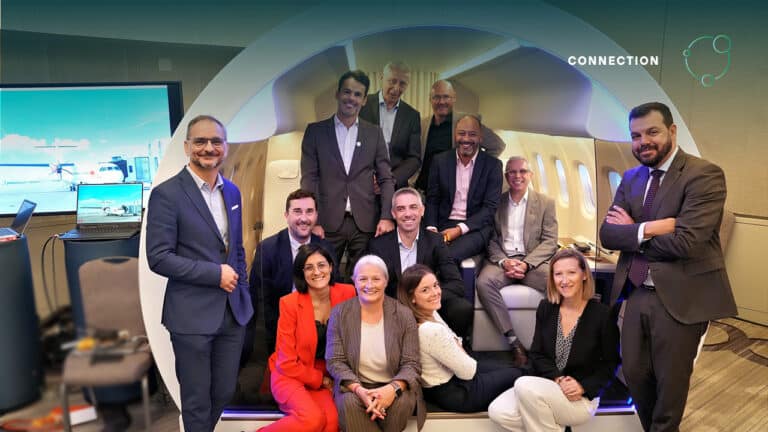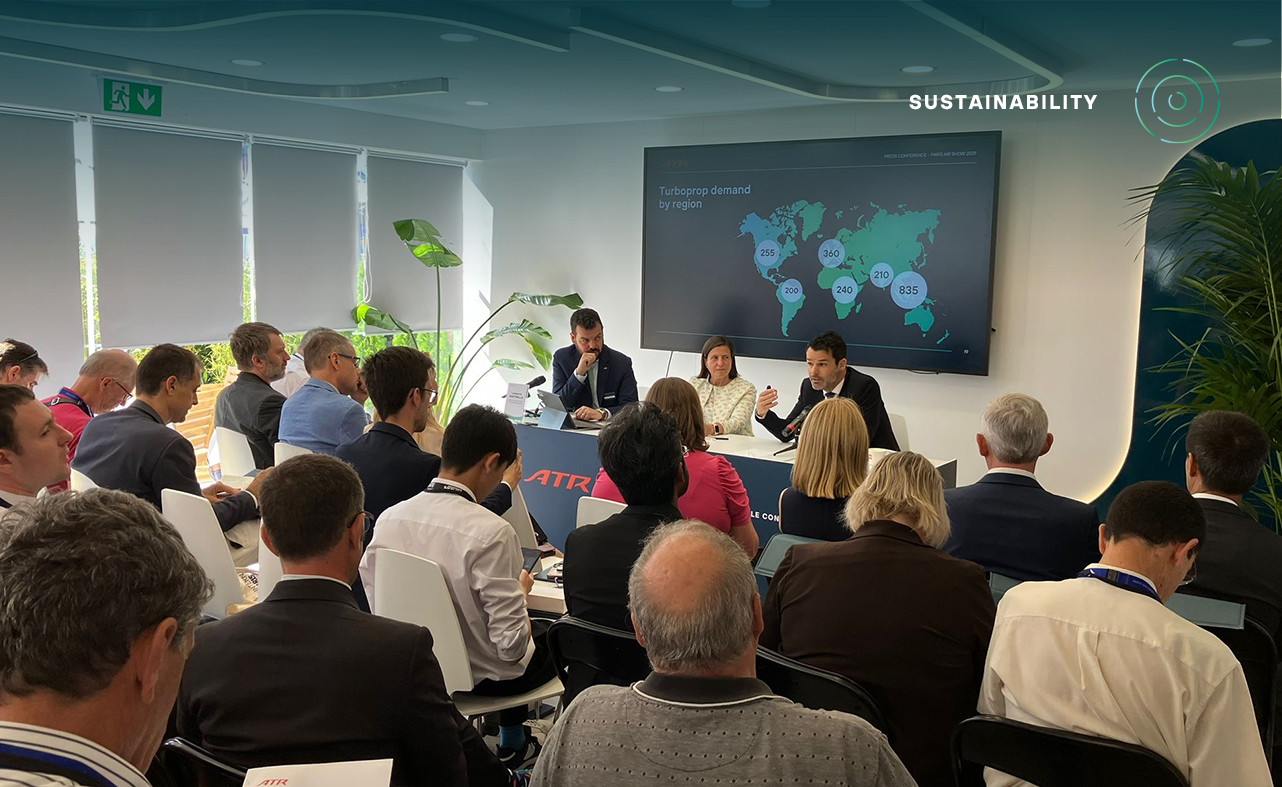ATR Accelerates Growth, Efficiency and Sustainability at 2025 Paris Air Show
Continuing Strong Performance and Industry Leadership
Paris Air Show, 18 June 2025 – ATR, the world’s leading manufacturer of regional aircraft, unveiled a series of announcements highlighting its continued growth, customer-driven strategic initiatives, and commitment to a more efficient, lower-emission future for regional aviation.
With 30 new commitments recorded in the first half of 2025, including 19 ATR 72-600s from Uni AIR and 11 ATR 72-600s from two undisclosed customers, ATR celebrates a major milestone of 1,900 aircraft sold since the beginning of the programme.
“Momentum around ATR aircraft is strong, with the largest airline order since 2017” said Nathalie Tarnaud Laude, Chief Executive Officer of ATR. “This milestone of 1,900 aircraft sold since the beginning of the programme is a clear vote of confidence from our customers. Our aircraft continue to prove itself as a compelling solution for regional air mobility, offering the right mix of performance, efficiency and reliability, that our customers demand.”
Latest Global Turboprop Market Forecast
ATR’s newly released turboprop market forecast underscores the strong demand for efficient, low-emission connectivity, projecting a global need for 2,100 passenger aircraft and 500 freighters over the next 20 years. Fleet replacement will be a key driver, with six out of every 10 new turboprop deliveries replacing older aircraft, as operators prioritise efficiency and profitability.
The Asia-Pacific region is set to lead this expansion, fuelled by new route creation, with forecasts of 210 aircraft for India and 835 across the rest of the region. In North America and Europe, where ATR forecasts the introduction of 255 and 360 new turboprops, respectively, fleet modernisation will be a key focus as operators transition away from aging regional jets and turboprops in favour of more efficient solutions.
“The ATR -600 series is more than just the most fuel-efficient regional aircraft, it is the key to low-emission, profitable operations in an evolving market” added Alexis Vidal, ATR’s SVP Commercial. “With up to $25M savings in operating costs per aircraft over the next decade versus a similar-size regional jet, ATR aircraft empower operators to thrive while reducing their environmental footprint. The momentum behind ATR’s turboprops is undeniable – airlines are embracing our ability to deliver responsible regional connectivity without compromising profitability, ensuring that communities remain connected, in the most remote areas of the globe.”
Innovations that Serve Customers’ Needs
To support this demand, ATR continues to evolve with product enhancements that will further reduce direct maintenance costs, improve aircraft availability, and boost profitability for operators. This ensures ATR aircraft remain competitive, cost-effective, and reliable, supporting airlines as they navigate a complex and evolving market.
Building on its collaboration with RTX’s Pratt & Whitney Canada to advance next-generation propulsion, ATR continues to drive efficiency and sustainability in regional aviation. This leadership is reinforced with a significant regulatory milestone: EASA’s CS-CO2 certification, based on ICAO’s stringent CO₂ efficiency standard. The ATR 72-600 outperformed regulatory requirements, delivering an impressive 20% margin beyond the “new type” required criteria, setting the benchmark for fuel efficiency and sustainability.
“This certification is not just a recognition of ATR’s commitment—it is proof that we are ahead of the curve. Sustainability is our pride, our competitive edge, and the foundation of every innovation we bring to market,” added Nathalie Tarnaud Laude. “We have won new orders specifically because of the sustainability credentials of our aircraft.”
ATR also announced a new Memorandum of Understanding with French SAF aggregator ATOBA Energy, reinforcing its commitment to accelerating SAF adoption in regional aviation. The initiative aims to simplify SAF access for ATR operators, particularly those without direct SAF supply options. Key focus areas include the exploration of physical delivery solutions to streamline access, technical and regulatory support for seamless SAF integration, and mass balance models, allowing airlines to benefit from SAF’s environmental advantages without needing direct physical access
“We were the first to fly a commercial aircraft with 100% SAF in both engines back in June 2022, and now we are taking the next step. We believe it is also our role to facilitate SAF adoption across our operators’ networks,” said Nathalie Tarnaud Laude.
As ATR marks the halfway point of 2025, the company remains on track, confident, and forward-looking. “Our customers’ success is our success. For ATR to remain competitive, our operators must be competitive and profitable—that is why we continue to invest, innovate, and lead”, concluded Nathalie Tarnaud Laude.
Press Contacts
Charlotte Giuria
Head of Content
Jeanne Caumont
Content & Media Relations
About ATR
ATR is the world number one regional aircraft manufacturer with its ATR 42 and 72, the best-selling aircraft in the below 90-seat market segment. The unifying vision of the company is to accelerate sustainable connections for people, communities and businesses, no matter how remote. Flown by some 200 airlines in over 100 countries, ATR aircraft open 120 new routes on average every year, facilitating the development of territories and enabling access to crucial services like healthcare and education. Thanks to ATR’s focus on continuous innovation and the intrinsic efficiency of the turboprop technology, ATR aircraft are the most advanced, versatile, cost-effective and lowest-emission regional aircraft on the market, emitting 45% less CO2 than similar-size regional jets. In January 2022, we flew the first ever commercial aircraft using 100% SAF in both engines. ATR is a joint-venture between Airbus and Leonardo.












